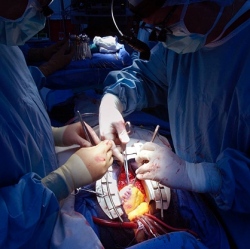
A novel method for finding and delivering healing drugs to newly formed microcracks in bones has been invented by a team of chemists and bioengineers at Penn State University and Boston University.
The method involves the targeted delivery of the drugs, directly to the cracks, on the backs of tiny self-powered nanoparticles. The energy that revs the motors of the nanoparticles and sends them rushing toward the crack comes from a surprising source — the crack itself.
“When a crack occurs in a bone, it disrupts the minerals in the bone, which leach out as charged particles — as ions — that create an electric field, which pulls the negatively charged nanoparticles toward the crack,” said Penn State Professor of Chemistry Ayusman Sen, a co-leader of the research team.
“Our experiments have shown that a biocompatible particle can quickly and naturally deliver an osteoporosis drug directly to a newly cracked bone.”
Sen said that the formation of this kind of an electric field is a well-known phenomenon, but other scientists previously had not used it as both a power source and a homing beacon to actively deliver bone-healing medications to the sites most at risk for fracture or active deterioration. “It is a novel way to detect cracks and deliver medicines to them,” said team co-leader and Boston University Professor Mark Grinstaff.
The method is more energetic and more targeted than current methods, in which medications ride passively on the circulating bloodstream, where they may or may not arrive at microcracks in a high-enough dosage to initiate healing.
The new method holds the promise of treating — as soon as they form — the microcracks that lead to broken bones in patients with osteoporosis and other medical conditions.
